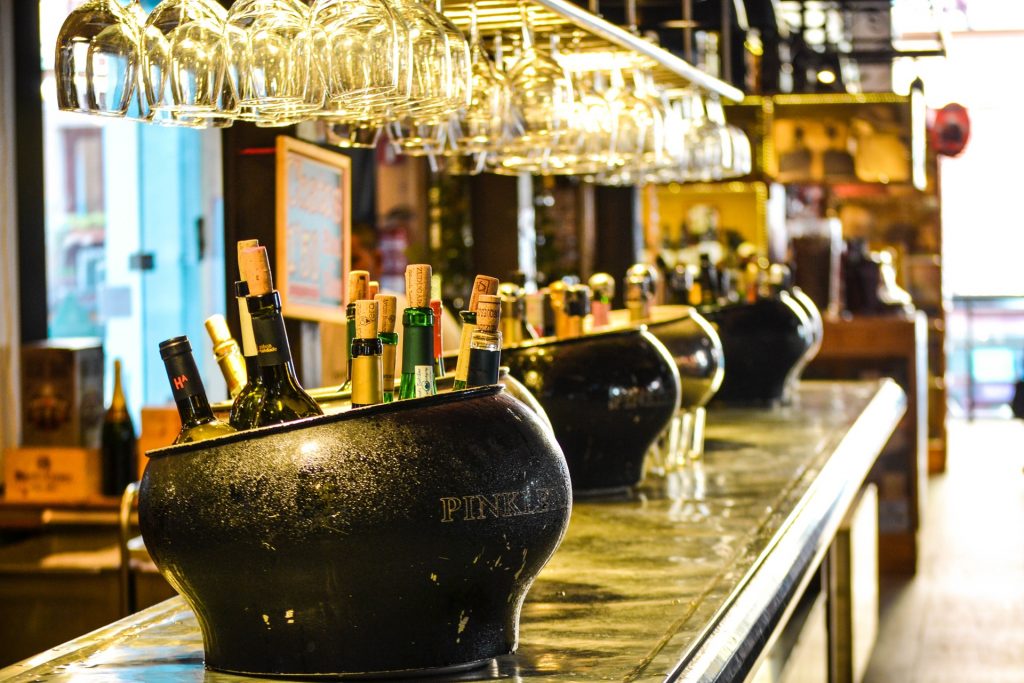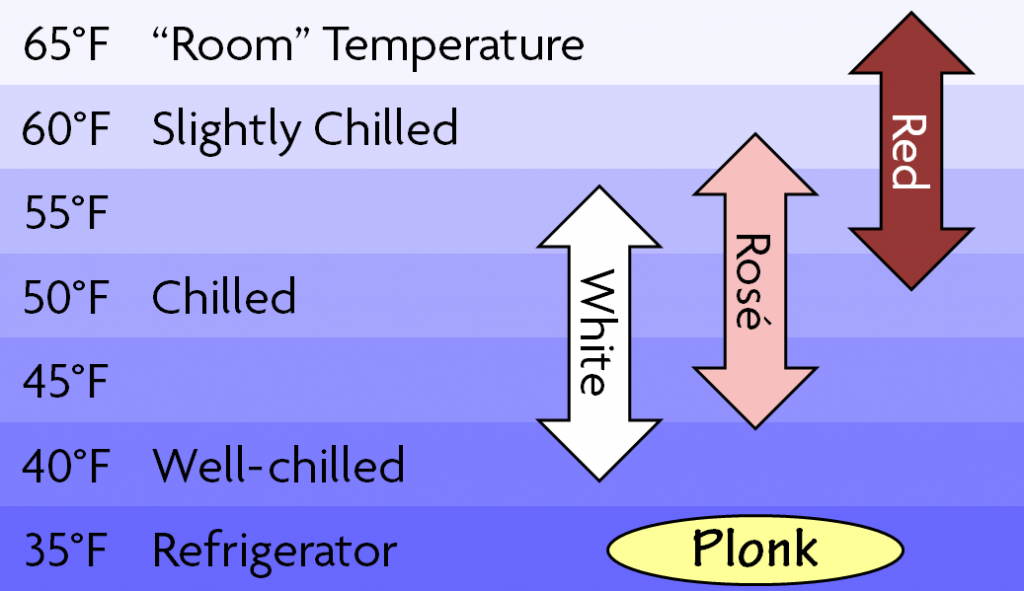
Serving temperature can have a profound impact on both the taste and mouthfeel of wine, so part of my getting ready to taste wines with customers is to figure out what temperature I want to serve them at. A consideration of the grape varieties and the wine style usually provides a good starting point, but there can be surprises.
Sometimes many surprises.
Recently, I received several proprietary blends to evaluate from a new producer than I am working with. Because I didn’t know exactly what was in each wine I had to make some guesses about serving temperature and I, er, um, guessed wrong. Multiple times. As I was tasting through the sample bottles, I really started to feel a bit like Goldilocks… “This wine is too warm! This wine is too cold!”
There are many ways that temperature affects how we perceive wine. A cooler wine gives off less aroma than a warmer one. Because smell is a big part of taste, this changes both what goes on in your nose and what happens in your mouth. Make a wine too cold, below 40°F or so, and it won’t have much of any flavor at all (which, it should be noted, can sometimes be an advantage with less delicious wines). At the other extreme, as wine gets too warm (above 70° to 75°F), the alcohol starts to take over, masking the taste and giving an unpleasant burning sensation.
A lower serving temperature can give a wine more body and, on warm days, make a wine more refreshing. It also reduces the tongue’s perception of sweetness, which is why ice cream tastes great when cold but overly sweet when melted. On the other hand, acidity, bitterness, and astringency (tannin) are all more noticeable in cool wine than warm.
Commonly given advice is to “serve white wines chilled and red wines at room temperature.” This leads people wrong in a number of ways. All too often “chilled” becomes “straight from the refrigerator”, a temperature that is almost always too cold. Similarly, “room temperature”, especially on a summer day or when the room is the kitchen, is likely to be too warm. Even when it isn’t, many red wines will benefit from being chilled slightly below what most of us would consider a comfortable room.
As with many other things about wine, the right serving temperature depends on which bottle you have in front of you. The chart below gives approximate temperature ranges for serving red, white, and rosé wines. Richer, fuller wines will typically be best in the warmer part of the range. Lighter or sweeter wines towards the cooler part (with the combination of light and sweet served coldest). Sparkling wines also are served at lower temperatures as cold helps keep the carbon dioxide in solution, preserving the bubbles and keeping the wines from becoming too frothy.

When chilling wine, allow about 30 minutes of time in the refrigerator for every five degrees cooler you want to make it. If you’re in a hurry, use an ice bath– then you only need to allow about 2 minutes per five degrees. Wine warms up quickly in the glass, and it is usually a good idea to have the bottle just a little cooler than “perfect” to allow for this. If you need to warm up an entire bottle, plan for about 15 minutes per five degrees in a 70 degree room. (In a warmer room it will take less time.)
Returning to our narrative, the fairy tale solution of opening new bottles until finding one that was just right was unavailable to me, so I was just going to have to work with what I already had. The wines that seemed too thin or sweet I chilled a bit more. The ones that seemed odorless or flavorless I let warm up a bit. And when I went back to re-taste them all, things were much better.
The moral of the story is listen to your taste buds. (Well, that and… the bears should be truly thankful Goldilocks didn’t find the key to the wine cellar!) By taking advantage of the ways the temperature affects the perception of wine you can make it more enjoyable. Besides, your taste buds work differently than everyone else’s– maybe a little experimentation will help you discover why your friends are raving about a wine you think is only so-so. After all, the three bears prove that even in a fairy tale not everyone likes things the same way.
